
Multi-functional Monitoring System
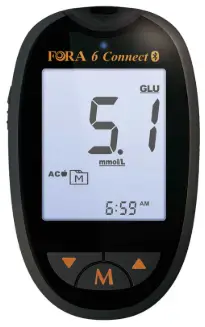
Owner’s Manual ![]()
Safety Information
Read the following Safety Information thoroughly before using the device.
- Use this device ONLY for the intended use described in this manual.
- Do NOT use accessories which are not specified by the manufacturer.
- Do NOT use the device if it is not working properly or damaged.
- This device does NOT serve as a cure for any symptoms or diseases. The data measured is for reference only.
Always consult your doctor to have the results interpreted. - The blood glucose and the blood glucose/ hematocrit/ hemoglobin test strips can be used for the testing of newborns.
- The β-Ketone, total cholesterol and uric acid test strips shall NOT be used for the testing of newborns.
- Before using this device, read all instructions thoroughly and practice the test. Carry out all the quality control checks as directed.
- Keep the device and testing supplies away from young children. Small items such as the battery cover, batteries, test strips, lancets and vial caps are choking hazards.
- Do NOT use this instrument in close proximity to sources of strong electromagnetic radiation, as these may interfere with the correct operation.
- Proper maintenance as well as timely calibration of the device together with the control solution is essential in ensuring the longevity of your device. If you are concerned about the accuracy of the measurement, please contact the place of purchase or customer service representative for assistance. KEEP THESE INSTRUCTIONS IN A SAFE PLACE
Important Information
- Severe dehydration and excessive water loss may cause readings which are lower than actual values. If you believe you are suffering from severe dehydration, consult a healthcare professional immediately.
- If your test results are lower or higher than usual, and you do not have symptoms of illness, first repeat the test.
If you have symptoms or continue to get results higher or lower than usual, follow the treatment advice of your healthcare professional. - Use only fresh whole blood sample to perform a test. Using other substances will lead to incorrect results.
- If you are experiencing symptoms that are inconsistent with your test results and you have followed all the instructions given in this owner’s manual, contact your healthcare professional.
- We do not recommend using this product on severely hypotensive individuals or patients in shock. Readings which are lower than actual values may occur for individuals experiencing a hyperglycaemic-hyperosmolar state, with or without ketosis. Please consult the healthcare professional before use.
- The measurement unit used for indicating the concentration of blood glucose can have mg/dL or mmol/L. The approximate calculation rule for conversion of mg/dL in mmol/L is:
| mg/dL | Divided by 18 | = mmol/L |
| mmol/L | Times 18 | = mg/dL |
For example:
- 120 mg/dL ÷ 18 = 6.6 mmol/L
- 7.2 mmol/L x 18 = 129 mg/dL approximately
Introduction
Intended Use
This system is intended for use outside the body (in vitro diagnostic use) by people with diabetes at home and by health- care professionals in clinical settings as an aid to monitor the effectiveness of diabetes control. It is intended to be used for the quantitative measurement of the blood glucose, hematocrit, hemoglobin, β-ketone, total cholesterol and uric acid levels in whole blood. It should not be used for the diagnosis of diabetes.
Professionals may test with capillary and venous blood sample. Use only heparin for anticoagulation of whole blood.
Home use is limited to capillary blood from the finger tip and the approved sites.
Test Principle
With different types of test strips, your FORA 6 Connect Multi-functional Monitoring System allows you to measure the amount of blood glucose, hematocrit, hemoglobin, β-Ketone, total cholesterol and uric acid levels in whole blood. The testing is based on the measurement of electrical current generated by the reaction of different substance with the reagent of the strip. The meter measures the current, calculates the blood glucose, hematocrit, hemoglobin, β-Ketone, total cholesterol or uric acid, and displays the result.
The strength of the current produced by the reaction depends on the amount of the substance in the blood sample.
Product Overview

- Test Strip Slot
- Strip Indication Light
- Test Strip Ejector
- Battery Compartment
- Display Screen
- Down Button
- MAIN Button
- UP Button
- Bluetooth Indicator
Screen Display
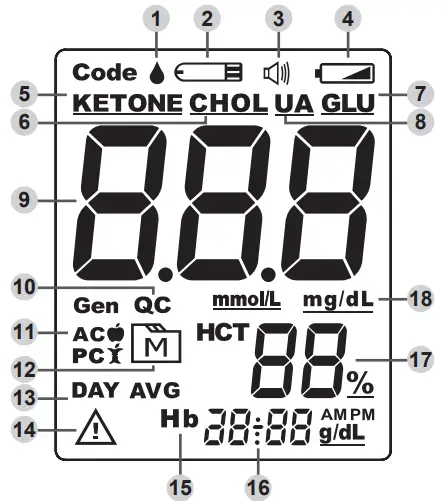
- Blood Drop Symbol
- Test Strip Symbol
- Universal Tone Symbol
- Low battery Symbol
- Ketone Symbol / Ketone Warning
- Total Cholesterol Symbol
- Blood Glucose Symbol
- Uric Acid Symbol
- Test Result
- QC Mode
QC – control solution testing - Measurement Mode
AC – before meal
PC – after meal
Gen – any time of day - Memory Symbol
- Day Average
- Warning Symbol
- Hemoglobin Symbol
- Date & Time
- Hematocrit Level
- Measurement Unit
(The measurement unit of the meter depends on the actual specification provided for the sales area.)
Getting Started
Initial Setup
Please follow the initial setup procedure before using the device for the first time or after you have replaced the battery. When the battery power is extremely low and “ ![]() ” appears on the screen, the meter cannot be turned on.
” appears on the screen, the meter cannot be turned on.
Step 1: Enter the Setting Mode
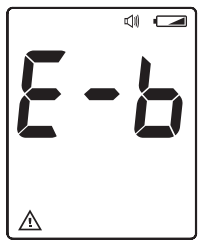
- The meter turns on automatically once a new battery is inserted.
Note: When you turn on the meter by pressing MAIN button for the first time, the meter will turn off automatically due to no data. - Start with the meter off (no test strip inserted). Press and hold ▲ and ▼ at the same time.
Step 2: Configuring the Settings (Date, Time, Universal Tone, Memory Deletion and Reminder Alarm)
Press ▲ or ▼ to adjust the value or enable/disable the setting. Then press MAIN button to confirm the setting and switch to another field.

Note: • Press ▲ to select Beep On, Universal Tone On or Beep Off. Press MAIN button to confirm.
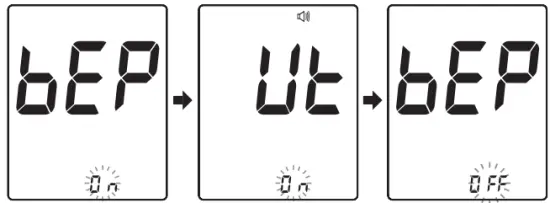
- When Universal Tone is turned on, the meter guides you through the blood glucose test using beep tones; it also outputs the result as a series of beeps.
- When Beep is turned off, the alarm function will remain effective.
- During memory deletion, select “
 ” to keep all saved results.
” to keep all saved results. - You may set it up to four reminder alarms.
- To turn off the alarm, press ▲ or ▼ to change On to OFF. Press MAIN button to confirm.
- When the alarm goes off, the device will automatically turn on. Press ▲ to mute the alarm. If you do not press ▲, the device will beep for 2 minutes then switch off.
- If the device is idle for 2 minutes during the setting mode, it will turn off automatically.
Before Testing
Calibration
You must calibrate the meter every time you begin to use a new vial of β-ketone/ Total cholesterol/ Uric acid test strips by setting the meter with the correct code. Test results may be inaccurate if the code number displayed on the monitor does not match the number printed on the strip label or strip foil pack.
How to Code Your Meter (for β-ketone/ Total cholesterol/ Uric acid test)
- Insert the code strip when the meter is off. Wait until the code number appears on the display.
Note: Make sure the code numbers on display, code strip, and test strip vial or foil pack are the same. The code strip should be within the expiry date; otherwise, an error message may appear. - Remove the code strip, the display will show “OFF”. This tells you that the meter has finished coding and is ready for β-ketone/ Total cholesterol/ Uric acid testing.
Checking the Code Number
You need to make sure that the code number displayed on the meter matches the number on your test strip vial or foil pack before you proceed. If it matches, you can proceed with your test. If the codes do not match, please stop testing and repeat the calibration procedure. If the problem persists, contact Customer Service for help.
NOTICE: The codes used in this manual are examples only; your meter may display a different code.
WARNING:
- It is important to make sure that the LCD displayed code is the same as the code on your test strip vial or foil pack before testing. Failure to do so will get inaccurate results.
- If the LCD displayed code is not the same as the code on your test strip vial and the code number cannot be updated, please contact Customer Service for assistance.
Testing With Blood Sample
Test Strip Appearance

- Absorbent Hole
Apply a drop of blood here. The blood will be automatically absorbed. - Confirmation Window
This is where you confirm if enough blood has been applied to the absorbent hole in the strip. - Test Strip Handle
Hold this part to insert the test strip into the slot. - Contact Bars
Insert this end of the test strip into the meter. Push it in firmly until it will go no further.
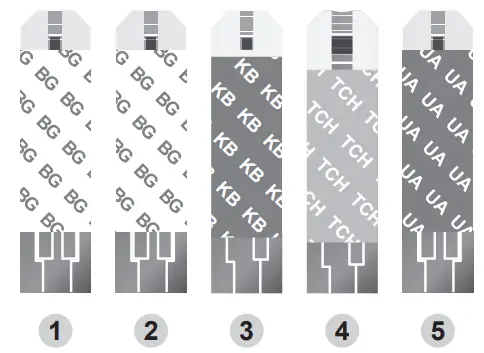
- Blood Glucose
- Blood Glucose / Hematocrit /Hemoglobin
- β-Ketone
- Total Cholesterol
Inserting a Test Strip
Insert the test strip into its slot.
Important! The front side of test strip should face up when inserting the test strip.
Test results might be wrong if the contact bar is not fully inserted into the test slot.
Preparing the Lancing Device
Please refer to the Lancing Device and Sterile Lancet insert for details.
Important! To reduce the chance of infection:
- Never share a lancet or a lancing device.
- Always use a new, sterile lancet. Lancets are for single use only.
- Avoid getting hand lotion, oils, dirt, or debris in or on the lancets and the lancing device.
Blood from sites other than the fingertip (For Blood Glucose Test Strip Only)
Alternative site testing (AST) is when individuals check their blood glucose levels using other areas of the body other than the fingertips. The FORA test strips allow AST to be performed on sites other than the fingertips. Please consult your health care professional before you begin AST. Alternative site sample results may be different from fingertip sample results when glucose levels are changing rapidly (e.g., after a meal, after taking insulin, or during or after exercise).
We strongly recommend that you perform AST ONLY at the following times:
- During a pre-meal or fasting state (more than 2 hours since the last meal).
- Two hours or more after taking insulin.
- Two hours or more after exercise.
Do NOT rely on test results at an alternative sampling site, but use samples taken from the fingertip, if any of the following applies:
- You think your blood sugar is low.
- You are not aware of symptoms when you become hypoglycemic.
- The results do not agree with the way you feel.
- After a meal.
- After exercise.
- During illness.
- During times of stress.
Important!
- Do not use results from alternative site samples to calibrate continuous glucose monitoring systems (CGMS), or for insulin dose calculations.
- Choose a different spot each time you test. Repeated punctures at the same spot may cause soreness and calluses.
- Avoid lancing the areas with obvious veins to avoid excessive bleeding.
- It is recommended to discard the first drop of blood as it might contain tissue fluid, which may affect the test result.
Performing A Test
- Insert the test strip into the test slot of the device. Wait for the device to display the test strip “
 ” and blood drop “
” and blood drop “ ”.
”. - Press ▲ to adjust the measuring mode, and press MAIN button to confirm it. (For Blood Glucose test and Blood Glucose / Hematocrit / Hemoglobin test only.)
• General Tests (Gen) – any time of day without regard to time since the last meal. • AC ( ) – no food intake for at least 8 hours. • PC (
) – no food intake for at least 8 hours. • PC ( ) – 2 hours after a meal. • QC (QC) – testing with control solution.
) – 2 hours after a meal. • QC (QC) – testing with control solution. - Obtain a blood sample.
Use the pre-set lancing device to puncture the desired site. Wipe off the first appeared drop of blood with a clean cotton swab. Gently squeeze the punctured area to obtain another drop of blood. Be careful NOT to smear the blood sample.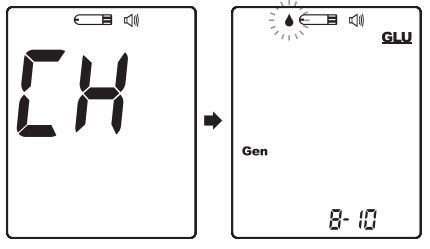 NOTICE: Please avoid over-squeezing. The test result may be inaccurate when the blood sample contains tissue fluid.
NOTICE: Please avoid over-squeezing. The test result may be inaccurate when the blood sample contains tissue fluid.
The blood sample size of each test should be at least, • blood glucose test: 0.5μL • blood glucose/ hematocrit/hemoglobin test: 0.5μL • β-ketone test: 0.8μL • total cholesterol test: 3.0μL • uric acid test: 1.0μL
- Apply the blood sample.
Move your finger to meet the absorbent hole of the test strip and the drop will be automatically be drawn onto the test strip. Remove your finger until the confirmation window is filled. The meter begins to count down. Do not remove your finger until you
hear a beep sound. - Read your result.
The results of your test will appear after the meter counts down to 0. The results will be stored automatically in the meter memory.

Ketone Warning
- When your blood glucose result is higher than 240 mg/dL (13.3 mmol/L), the meter will display the blood glucose reading as well as a Ketone warning (flashing KETONE and “
 ”).
”). - The ketone warning is to notify you that you may be at risk of elevated Ketone levels and a Ketone test is recommended.
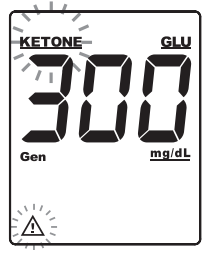
Disposing Used Test Strip and Lancet
To remove the used test strip, simply push the Test Strip Ejector button upward to eject the used test strip. The device will automatically turn off after the test strip is removed. To remove the used lancet, remove the lancet from the lancing device after you have finished testing. Discard your used strip and lancet properly in a punctureresistant container.
Important! The used lancet and test strip may be biohazards. Please consult your health-care provider for proper disposal which complies with your local regulations.
Control Solution Testing
Our Control Solution contains a known amount of substance that reacts with test strips and is used to ensure your device and test strips are working together correctly.
Test strips, control solutions, or sterile lancets may not be included in the kit (please check the contents on your product box). They can be purchased separately.
To perform the control solution test, do the following:
- Insert the test strip into the test slot of the device. Wait for the device to display the test strip “
 ” and blood drop “
” and blood drop “ ”.
”. - The meter will detect the difference between control solution and blood samples automatically.
It will automatically mark the result as a control solution test with “QC” display. - Apply the control solution. Shake the control solution vial thoroughly before use. Squeeze out a drop and wipe it off, then squeeze another drop and place it on the tip of the vial cap. Hold the device to move the absorbent hole of the test strip to touch the drop. Once the confirmation window is filled completely, the device will begin counting down.
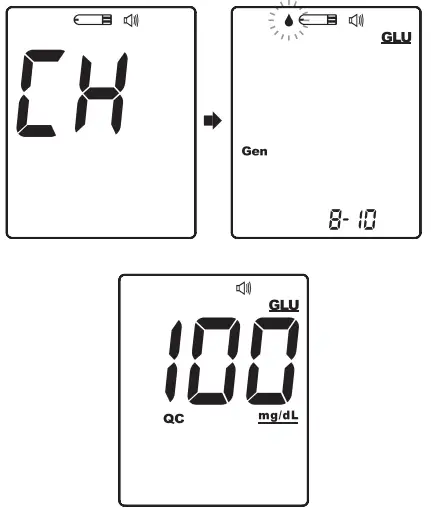 Note: To avoid contaminating the control solution, do not directly apply the control solution onto a strip.
Note: To avoid contaminating the control solution, do not directly apply the control solution onto a strip.
- Read and compare the result. After counting down to 0, the test result of the control solution will appear on the display. Compare this result with the range printed on the test strip vial or individual foil pack and it should fall within this range. If the test result is out of range, read the instructions again and repeat the control solution test.
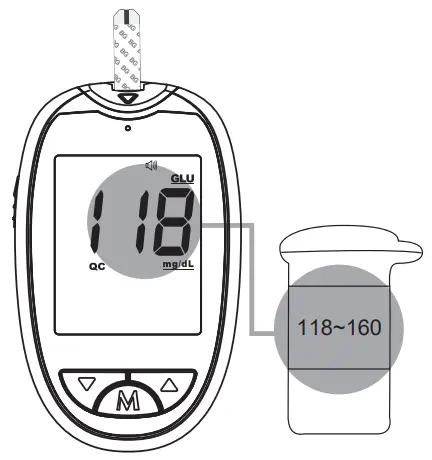
Note:
- Control solution test results are stored in the memory.
- The control solution range printed on the test strip vial or individual foil pack is for control solution use only. It is not the recommended range or reference values.
- Refer to the Maintenance section for important information about your control solutions.
Out-of-range results:
If you continue to get results that fall outside the range printed on the test strip vial, it means that the meter and strips might not be working properly. Please contact your local customer service or place of purchase for assistance.
Reviewing Test Results
Your device stores the 1000 most recent test results along with respective dates and times in its memory. To enter the device memory, start with the device switched off.
To review all test results, do the following:
- Press and release MAIN button or ▲. The “
 ” icon appears on the screen.
” icon appears on the screen. - Press MAIN to review the test results stored in the device. Press ▲ or ▼ repeatedly to review other test results stored in the device. After the last test result, press MAIN again and the device will be turned off.

To review the day-average test results, do the following:
- Press and release ▼ to enter memory mode for average results with “
 ” and displayed on the screen. Release MAIN and then your 7-day average result measured in general mode will appear on the display.
” and displayed on the screen. Release MAIN and then your 7-day average result measured in general mode will appear on the display. - Press ▲ or ▼ to review 14, 21, 28, 60 and 90-day average results stored in each measuring mode in the order of Gen, AC, then PC.
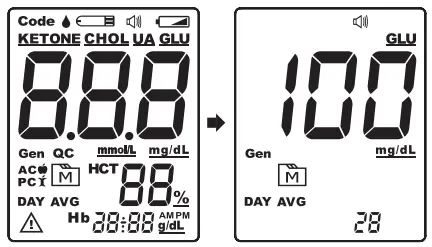
Note:
- Press and hold MAIN for 5 seconds to exit the memory mode or leave it without any action for 2 minutes. The device will turn off automatically.
- If using the device for the first time, the “—” icon will appear when you recall the test results or review the average result. This indicates that there is no test result in the memory.
- Control solution results are NOT included in the day average.
Transferring Data
Data Transmission Via Bluetooth
You can use your device with an iOS (5.0.1 or higher) or Android system (4.3 API Level 18 or higher) to download data from your FORA 6 Connect via Bluetooth.
Follow the steps below to transmit data from your FORA 6 Connect. Please contact your local customer service or place of purchase for assistance.
- Install the software (iFORA HM) to your device with an iOS or Android system.
- Every time the FORA 6 Connect is turned off, the Bluetooth will be initiated for data transmission. The Bluetooth indicator flashes in blue.
- Make sure your FORA 6 Connect is already paired with your device with an iOS or Android system by following the instructions as below.

 Note: This step is recommended when the user needs to pair this meter to a Bluetooth receiver for the first time, or when the user needs to pair this meter to another new Bluetooth receiver.
Note: This step is recommended when the user needs to pair this meter to a Bluetooth receiver for the first time, or when the user needs to pair this meter to another new Bluetooth receiver. - If your device with an iOS or Android system is within the receiving range, the data transmission will start and the Bluetooth signals in blue. Once it is finished, the FORA 6 Connect will automatically switch off.
- If your device with an iOS or Android system is not within the receiving range, the FORA 6 Connect will automatically switch off in 2 minutes.
Note: • While the meter is in transmission mode, it will be unable to perform a blood glucose test. • Make sure your device with iOS or Android system has turned on its Bluetooth before transmitting the data and the meter is within the receiving range.
Maintenance
Changing Battery
You must change the battery immediately and reset the date and time when the battery power is extremely low and “![]() ” appears on the screen. The meter cannot be turned on.
” appears on the screen. The meter cannot be turned on.
To change the battery, do the following:
- Press the edge of the battery cover and lift it up to remove the cover.
- Remove the old battery and replace with one 1.5V AAA size alkaline battery.
- Close the battery cover. If the battery is inserted correctly, you will hear a “beep” afterwards.
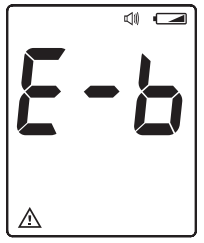
CAUTION
RISK OF EXPLOSION IF BATTERY IS REPLACED BY AN INCORRECT TYPE.
DISPOSE OF USED BATTERIES ACCORDING TO THE INSTRUCTIONS.
Note:
- Replacing the battery does not affect the test results stored in memory.
- Keep away the battery from small children. If swallowed, promptly seek medical assistance.
- Battery may leak chemicals if unused for a long time. Remove the battery if you are not going to use the device for an extended period.
- Properly dispose of the used battery according to your local environmental regulations.
Caring for Your Device
- To clean the exterior of the device, wipe it with a cloth moistened with tap water or a mild cleaning agent, then dry the device with a soft dry cloth. Do NOT rinse with water.
- Do NOT use organic solvents to clean the device.
Device Storage
- Storage condition: -20°C to 60°C (-4°F to 140°F), and 10% to 93% relative humidity.
- Always store or transport the device in its original storage case.
- Avoid dropping and heavy impact.
- Avoid direct sunlight and high humidity.
Meter Disposal
The used meter should be treated as contaminated and may carry a risk of infection during measurement. The batteries in this used meter should be removed and the meter should be disposed in accordance with local regulations.
Caring for Your Accessories
For the maintenance of each accessory, please refer to the test strip, control solution, lancing device and lancet inserts.
Symbol Information
| Symbol | Referent |
| For in vitro diagnostic use | |
| Consult instructions for use | |
| Use by | |
| Batch code | |
| Serial number | |
| Importer | |
| Distributor | |
| Model number | |
| Disposal of waste equipment | |
| 1.5 Volts DC | |
| Do not reuse | |
| Storage/Transportation temperature limitation | |
| CE Mark | |
| Manufacturer | |
| Dispose of the packaging properly after use | |
| Caution, consult accompanying documents | |
| Sterilized using irradiation | |
| Do not use if package is damaged | |
 | Storage/Transportation humidity limitation |
| Unique device identifier | |
| Quantity | |
| Authorised representative in the European Union | |
| Battery | |
| Sorting instructions |
Troubleshooting
If you follow the recommended steps but the problem persists, or error messages other than the ones below appear, please call your local customer service.
Do not attempt to repair the device yourself and never try to disassemble the device under any circumstances.
Result Readings
Blood Glucose Test:
| Message | What it Means |
| < 10 mg/dL (0.5 mmol/L) | |
 | ≥ 240 mg/dL (13.3 mmol/L) |
| > 600 mg/dL (33.3 mmol/L) |
Blood Glucose / Hematocrit/ Hemoglobin Test:
| Message | What it Means |
| < 10 mg/dL (0.5 mmol/L) | |
 | ≥ 240 mg/dL (13.3 mmol/L) |
| > 600 mg/dL (33.3 mmol/L) |
β-Ketone Test:
| Message | What it Means |
| < 0.1 mmol/L | |
| > 8.0 mmol/L |
Total Cholesterol Test:
| Message | What it Means |
| < 100 mg/dL (2.65 mmol/L) | |
| > 400 mg/dL (10.4 mmol/L) |
Uric Acid Test:
| Message | What it Means |
| < 3 mg/dL (0.179 mmol/L) | |
| > 20 mg/dL (1.190 mmol/L) |
Error Message
| Error Message | Cause | What To Do |
| E-b | There is insufficient power in the batteries to perform the test. | Replace the batteries immediately and reset the date and time on the meter setting. |
| E-U | The strip has been used. | Repeat the test with a new strip. |
| The blood sample has been applied to the strip before the meter was ready for the measurement. | Repeat the test with a new strip. A Apply the blood sample when the meter indicates that it is ready for the measurement by displaying “ | |
| E-E | Meter calibration data error. | Review the instructions and repeat the test with a new strip and using the correct technique. If the problem persists, contact your local customer service for assistance. |
| E-0 | The component of the device might be broken. | |
| ER | Meter malfunction due to damaged components. | |
| EC | Incorrect data on the meter or the code strip. | |
| E-F | You may have removed the strip after applying blood, or there is insufficient blood volume. | Review the instructions and repeat the test with a new test strip. Please make sure you use the correct technique and dose with enough blood. |
| E-t | Ambient temperature is below the operating temperature. | The operating temperature range is from 8°C to 45°C (46.4°F to 113°F). Repeat the test after the device and test strip have reached the above-mentioned operating temperature. |
| Ambient temperature is above the operating temperature. | ||
| E-2 | Appears when the test strips are expired. (This only applies to (3-ketone, total cholesterol and uric acid test strips) | Ensure the date and time settings of the meter are correct and up to date. Insert the code strip again. If the problem persists, please check the expiry date of the test strip. Discard the expired test strips. Use a new test strip that is in date and repeat the test. |
Blood Glucose Measurement
| Symptom | Cause | What To Do |
| The device does not display a message after inserting a test strip. | Batteries exhausted. | Replace the battery immediately and reset date and time on the meter setting. |
| Test strip inserted upside down or incompletely. | Insert the test strip with contact bars end first and facing up. | |
| Defective device or test strips. | Please contact customer service. | |
| The test does not start after applying the sample. | Insufficient blood sample. | Repeat the test using a new test strip with larger volume of blood sample. |
| Defective test strip. | Repeat the test with a new test strip. | |
| Sample applied after the device is automatically turned off. | Repeat the test with a new test strip. Apply sample only when flashing “ | |
| Defective device. | Please contact customer service. | |
| The control solution testing result is out of range. | Error in performing the test. | Read instructions thoroughly and repeat the test again. |
| Control solution vial was poorly shaken. | Shake the control solution vigorously and repeat the test again. | |
| Expired or contaminated control solution. | Check the expiration date of the control solution. | |
| Control solution that is too warm or too cold. | Control solution, device, and test strips should be at room temperature (20°C to 25°C / 68°F to 77°F) before testing. | |
| Defective test strip. | Repeat the test with a new test strip. | |
| Device malfunction. | Please contact customer service. |
Specifications
| Memory | 1000 measurement results with respective date and time |
| Dimensions | 89.8 (L) x 54.9 (W) x 18 (H) mm |
| Power Source | One 1.5V AAA alkaline battery |
| Weight | 46.1 g (without battery) |
| External Output | Bluetooth |
| Features | Auto electrode insertion detection Auto sample loading detection Auto reaction time count-down Auto switch-off after 2 minutes without action Temperature waming |
| Operating Condition | 8°C to 45°C (46.4°F to 113°F), below 85% R.H. (non-condensing) |
| Storage/Transportation Condition | -20°C to 60°C (-4°F to 140°F), 10% to 93% R.1-I |
| Measurement Units | Blood Glucose Test: mg/dL or mmoVL Hematocrit Test: % Hemoglobin Test: g/dL (3-ketone Test: mmol/L Total cholesterol Test: mg/dL Uric acid Test: mg/dL |
| Measurement Range | Blood Glucose Test: 10 – 600 mg/dL (0.55 – 33.3 mmoVL) Hematocrit Test: 0 – 70% Hemoglobin Test: 0 – 23.8 g/dL (3-ketone Test: 0.1 – 8.0 mmol/L Total cholesterol Test: 100 – 400 mg/dL (2.6 – 10.4 mmol/L) Uric acid Test: 3 – 20 mg/dL (0.179 – 1.190 mmoVL) |
| Hematocrit Range | Blood Glucose Test: 0 – 70% Blood Glucose/Hematocrit/Hemoglobin Test: 0 – 70% [3-ketone Test: 10 – 70% Uric Acid Test: 20 – 60% Total Cholesterol Test: 20 – 60% |
| Test Sample | Blood Glucose Test: Capillary! Venous! Neonatal/ Arterial Blood Glucose/Hematocrit/Hemoglobin Test: Capillary/ Venous/ Neonatal/Arterial (3-ketone Test: Capillary! Venous Uric Acid Test: Capillary Total Cholesterol Test: Capillary |
| Test Result | Measurements are reported as plasma equivalents |
This device has been tested to meet the electrical and safety requirements of: IEC/ EN 61010-1, IEC/EN 61010-2-101, EN 61326-, IEC/EN 61326-2-6, EN 301 489-17, EN 300 328.
WARRANTY TERMS AND CONDITIONS
With respect to disposable products, ForaCare Suisse warrants to the original purchaser that, at time of delivery, each standard product manufactured by ForaCare Suisse shall be free from defects in material and workmanship and, when used for the purposes and indications described on the labeling, is fit for the purposes and indications described on the labeling. All warranties for a product shall expire as of the product expiration date, or if none, after five (5) year from the original date of purchase, as long as it has not been modified, altered, or misused. ForaCare Suisse warranty hereunder shall not apply if:
(i) a product is not used in accordance with its instructions or if it is used for a purpose not indicated on the labeling; (ii) any repairs, alterations or other work has been performed by the buyer or others on such item, other than work performed with ForaCare Suisse’s authorisation and according to its approved procedures; or (iii) the alleged defect is a result of abuse, misuse, improper maintenance, accident or the negligence of any party other than ForaCare Suisse. The warranty set forth herein is conditioned upon proper storage, installation, use and maintenance in accordance with applicable written recommendations from ForaCare Suisse. The warranty furnished hereunder does not extend to damaged items purchased hereunder resulting in whole or in part from the use of components, accessories, parts or supplies not furnished by ForaCare Suisse.
![]()
![]() MedNet EC-REP GmbH
MedNet EC-REP GmbH
Borkstraße 10, 48163 Mϋnster, Germany![]() ForaCare Suisse AG
ForaCare Suisse AG
Neugasse 55, 9000 St. Gallen, Switzerland
www.foracare.ch
![]()
![]()
Smart OTC GmbH
Markircher Straße 9A,
68229 Mannheim, Germany
TEL: +49 (0) 62176021410
FAX: +49 (0) 62176021444
www.foracare.de
For self-testing
Ver 2.0 2024/05
311-4183400-105
Documents / Resources
 | FORA 6 Connect Multi Functional Monitoring System [pdf] Owner's Manual 6 Connect Multi Functional Monitoring System, 6 Connect, Multi Functional Monitoring System, Functional Monitoring System, Monitoring System |